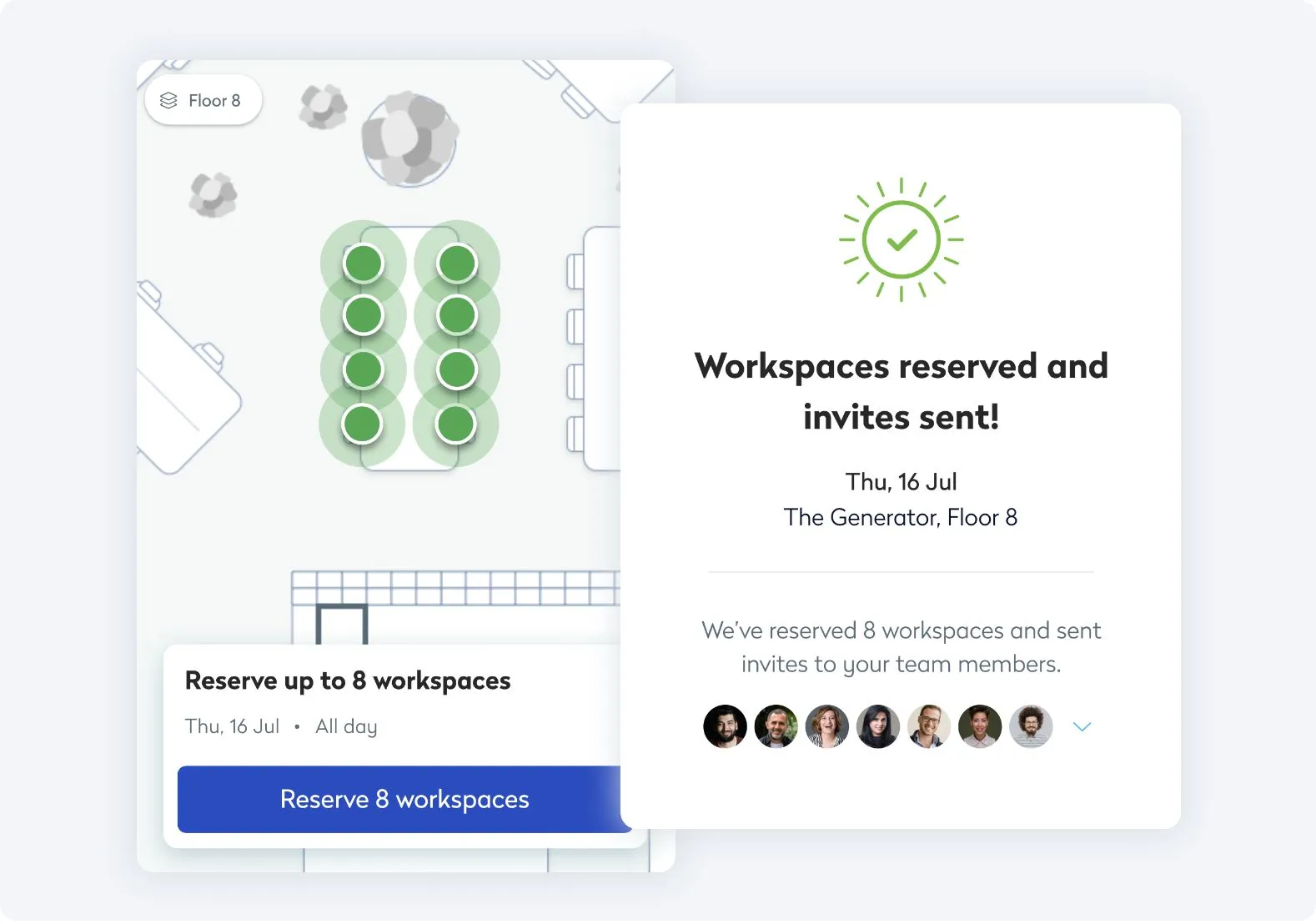
In the age of hybrid work models and remote working, your technology stack and its adoption are top of mind for workers and business leaders. From employee engagement to time management and project management software, cloud-based technology is essential for managing today’s dynamic workplace.
There’s a lot to think about beyond the excitement and promise of adopting the latest technological advancements. From seamless, digital visitor management solutions to digital twins and building information modeling to preventive maintenance, facilities management and building operations are more digitally unified than they’ve ever been before.
Yes, you want to boost efficiency and business productivity. But you also need to boost employee morale and encourage employees to work and collaborate with others face to face – and with remote workers simultaneously. Our quarterly research shows employees want a balance of in-person and remote working options – and are very motivated by being with, learning from, and being mentored by co-workers and managers.
But gone are the days of commuting to an office five days a week. So, you need smart technology that is easy to use, easy to share information, and easy to integrate.
Leaders have to realize that with every high-level, technology-driven decision made about adopting something new – such as artificial intelligence, machine learning, and other real time innovations – there will be fundamental changes to business processes. And these changes will force employees and vendors to adapt.
Technology plays an important role in changing work culture, but it’s important to remember it’s just a tool—and it can’t do all the work on its own. The ability of a work culture to be able to adapt and change to new technology goes beyond simply new training and upskilling programs.
“To some extent, however, it doesn’t matter if companies do fund upskilling or reskilling programs,” says Gallup researchers who study the link between technology and culture. “No matter how well-trained the employees, a slow, inflexible culture can’t make much of its tech or its workers. Agile is cultural, not digital, and culture depends on managers and leaders.”
Gallup finds there are eight traits or “qualities” that enable successful companies to be agile –one of which is the ability to adopt new technology. The other qualities include cooperation, speed of decision making, trial tolerance, empowerment, simplicity, knowledge sharing, and innovation focus.
When selecting technology, have a strong understanding of what you’re trying to accomplish and how. Ensure the software, app, platform, or service you choose will help you achieve the change you’re trying to support. Here are the key ways organizations are using technology to better influence corporate culture.
1. Collect and share accurate, real-time data
With space utilization software, it is now easier than ever for a department head to access usage data and gain a better understanding of their team’s work habits. This data includes the team’s physical location within the office and their interactions with other teams, removing the need for HR, IT, or CRE departments to be involved. This data can also be used to inform the hiring process by providing all the necessary information on a candidate such as their resume, application, interview notes, and feedback in one place. This makes the hiring process simpler and faster than ever.
Benefits: Greater transparency, efficiency, and evidence-based decisions.
2. Performance management moves to performance enablement
Technology should be used to make work frictionless and reduce barriers that get in the way of productivity. Eptura’s wayfinding tools, for example, reduce the time spent trying to locate a colleague or a meeting space, enabling employees to focus more on the task at hand. This encourages communication and collaboration and makes employees feel supported and empowered.
Benefits: Increased communication and collaboration, employees feel supported and empowered.
3. Provide and receive feedback
Survey and goal-tracking tools allow managers to quickly check in with employees more frequently and give feedback in a timely manner. HR departments can also use quick survey apps to capture employee sentiment or ask for feedback and suggestions. Leadership can host “AMAs” (Ask Me Anything) with employees to ask and answer questions about company goals and initiatives.
Benefits: Stronger communication, companies are able to course-correct and proactively address potential issues.
4. Offer more flexibility
Modern technology offers more flexibility for employees to work remotely or when traveling. They can also “clock in” at more convenient hours if they’re unable to be in the office during the standard working hours. Companies are also moving away from all-encompassing enterprise systems and seeking out technology that is source-agnostic, modular, and interconnected. Eptura’s workplace optimization solution, for example, can take in data from disparate sources, analyze it, and turn it into useful information.
Benefits: Flexible, family-friendly work policies without sacrificing performance; able to adapt and scale easily when technology itself is flexible.
5. Increase efficiency with automation
Software that monitors your building systems can conduct audits and tests of various systems and equipment seamlessly. Eptura’s scenario planning functionality allows users to create different move scenarios and estimate the ROI and practicality of each. This eliminates the guesswork of whether the baseline data is still accurate. Identify space occupancy patterns with peak utilization and frequency trends to receive an accurate overview about how employees are interacting with the space.
Benefits: More efficient decisions without spending hours buried in spreadsheets.
6. Reach sustainability goals
Technology is making it easier and more efficient for offices to go paperless (or at least, paper-reduced). Tablets and digital whiteboards mean less printing, which means using less ink and toner, and a reduction of physical space needed to store paper files. Sensors offer opportunities to make your building more efficient and green, such as smart lighting or HVAC systems that save money by only turning on when triggered by presence detection or various environmental stimuli.
Benefits: Reduced energy and building costs, and good corporate social responsibility PR.
7. Recognize and reward employees
Recognition and reward software allows anyone to give a ‘shout out’ to any employee who’s done exceptional work. Gamification can also be used to improve training and onboarding or to guide employees wanting to advance their careers. This helps employees understand the skills they need to build and the milestones they need to attain before their next promotion.
Benefits: Boost employee engagement and satisfaction.
Find out how Eptura’s technology can have a positive impact on changing your corporate culture—request a demo of our space utilization and planning software today.








